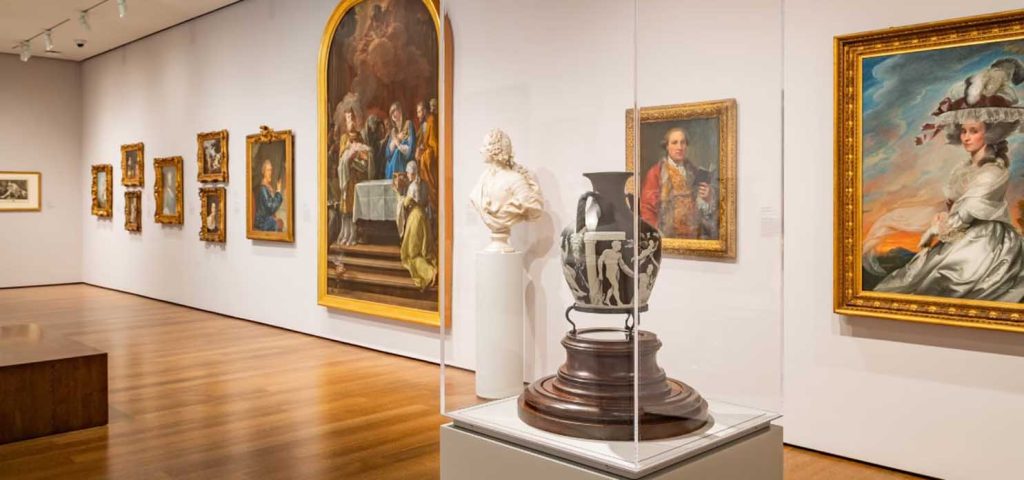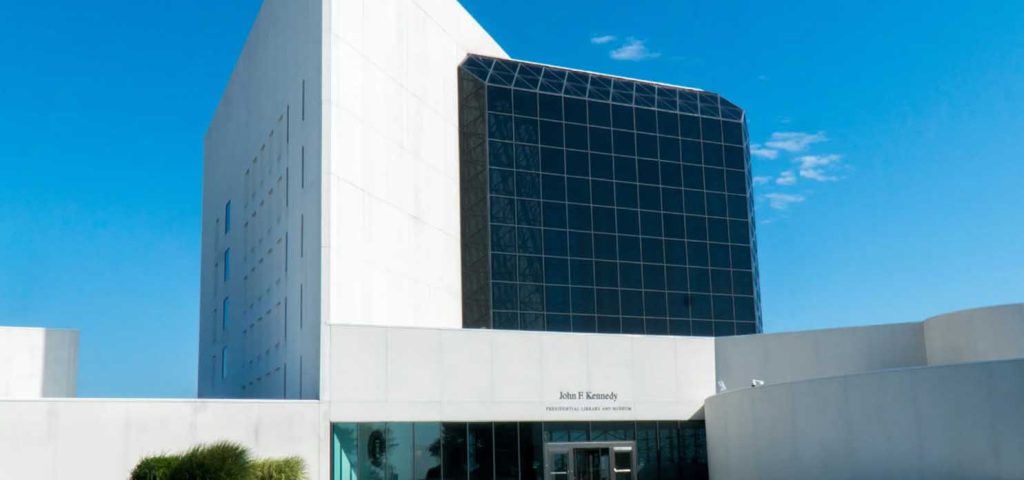Embarking on a cultural odyssey through the captivating city of Boston, I found myself immersed in the diverse tapestry of its Museum District. I will intricately guide you through six remarkable museums, unraveling the minutiae of my personal experiences. From the services provided to the advantages and drawbacks, precise geographical locations, transportation insights from the airport and stations, available discounts, ticket pricing, recommendation scores, to my unfiltered impressions of the booking platforms – join me as we delve into the enriching world of Boston’s cultural institutions.
Museum of Fine Arts (MFA): A Pinnacle of Artistic Splendor
The Museum of Fine Arts, a cornerstone of Boston’s cultural landscape, showcased an expansive collection spanning centuries and cultures. Services included guided tours, educational programs, and rotating exhibitions. The advantage of visiting MFA was the sheer diversity of art forms, but the drawback included potential crowding during peak hours. The coordinates are approximately 42.3394° N, 71.0942° W, situated in the Fenway-Kenmore neighborhood.
Transportation:
Transportation from Logan International Airport involved a 15-minute drive, with taxis and rideshare services readily available. The MFA was also accessible by the Green Line E Train.
Admission and Booking:
Admission fees varied, with occasional discounts for students and seniors. While the museum’s extensive collection was a treat for art enthusiasts, booking tickets through the official website or reputable travel platforms ensured a smoother entry and access to special exhibitions.
Isabella Stewart Gardner Museum: A Venetian-inspired Haven
The Isabella Stewart Gardner Museum, a unique blend of art and architecture, offered a Venetian-inspired oasis in the heart of Boston. Services included concerts, lectures, and garden tours. The advantage was the intimate setting and the immersive experience, while the drawback was the restriction on photographing the collection. The coordinates are approximately 42.3386° N, 71.0982° W, nestled in the Fenway-Kenmore area.Venturing into the Isabella Stewart Gardner Museum was like stepping into a Venetian-inspired oasis, a cultural gem nestled in the heart of Boston’s Fenway-Kenmore area. The museum, a unique fusion of art and architecture, offered an immersive experience that went beyond the typical gallery visit.
As I crossed the threshold into the Gardner Museum, the enchanting courtyard greeted me with its lush greenery and vibrant blooms. The architectural design, inspired by Venetian palaces, created an ambiance that transported visitors to a different time and place. The sound of trickling water from a fountain added a soothing melody to the surroundings, enhancing the overall sense of tranquility.
One of the distinctive features of the museum was its diverse range of services. Concerts echoed through the hallways, bringing the masterpieces to life with the harmonies of live music. Lectures provided a deeper understanding of the art on display, inviting visitors to engage in thoughtful discussions. Garden tours allowed glimpses into the meticulous landscaping that complemented the museum’s artistic offerings.
The advantage of the Isabella Stewart Gardner Museum lay in its intimate setting. Unlike larger institutions, the scale of the museum created a personal connection with each artwork. The proximity to the pieces allowed me to appreciate the details and nuances that might be overlooked in a more expansive venue. The museum felt like a curated collection assembled by a discerning art enthusiast rather than a formal institution.
The drawback, albeit a minor one, was the restriction on photographing the collection. While this policy aimed to preserve the contemplative atmosphere, it left me yearning to capture the visual treasures and share the experience with others.The Fenway-Kenmore area, already rich in cultural offerings, found its crown jewel in the Isabella Stewart Gardner Museum, where art and architecture merged to create a unique and unforgettable experience.
Transportation:
Transportation from Logan International Airport involved a 15-minute drive, and the museum was easily accessible by the Green Line E Train.
Admission and Booking:
Admission fees varied, with occasional discounts for students and seniors. The museum’s charm lay in Isabella Stewart Gardner’s vision, and booking tickets through the official website or reputable travel platforms allowed for a seamless exploration of this cultural gem.
Harvard Art Museums: Academic Excellence in Art Display
The Harvard Art Museums, a confluence of three museums within Harvard University, showcased a diverse range of art from various periods. Services included lectures, workshops, and gallery talks. The advantage was the scholarly approach to art curation, but the drawback included potential crowds during academic events. The coordinates are approximately 42.3736° N, 71.1097° W, situated in Harvard Square.

Transportation:
Transportation from Logan International Airport involved a 30-minute drive, and the museums were accessible by the Red Line Train.
Admission and Booking:
Admission fees varied, with occasional discounts for students and Harvard affiliates. The museums’ academic ambiance was distinctive, and booking tickets through the official website or reputable travel platforms ensured a seamless entry into the world of art and academia.
The Boston Tea Party Ships & Museum: Immersive Historical Voyage
The Boston Tea Party Ships & Museum offered a unique and immersive experience, recounting a pivotal moment in American history. Services included interactive exhibits, live reenactments, and a guided tour aboard a restored 18th-century sailing vessel. The advantage was the engaging storytelling, but the drawback was the limited parking in the area.Entering the Boston Tea Party Ships & Museum was like stepping back in time, reliving a pivotal moment that shaped the course of American history. Situated on Congress Street, with coordinates approximately 42.3513° N, 71.0498° W, the museum stood as a living testament to the events that unfolded during the Boston Tea Party.
The advantage of the museum lay in its ability to transform history into an engaging narrative. The interactive exhibits brought the past to life, allowing visitors to immerse themselves in the atmosphere of revolutionary Boston. Live reenactments transported me to the chaos of that fateful night, where passionate patriots made a bold statement against tyranny. The museum’s meticulous attention to historical accuracy made the experience not only informative but also deeply compelling.
A guided tour aboard a restored 18th-century sailing vessel added a layer of authenticity to the visit. As I stepped onto the ship, I could almost feel the wooden deck beneath my feet and imagine the tension in the air as colonists made a defiant stand against unjust taxation. It was a journey through time that went beyond traditional museum displays, creating a connection to the past that was both educational and emotionally resonant.
The drawback, albeit a logistical one, was the limited parking in the area. Navigating the bustling streets of Boston to find parking posed a minor challenge. Yet, once inside the museum, the inconvenience of parking faded into the background as the immersive storytelling took center stage.
Leaving the museum, I found myself not only more informed about the historical significance of the Boston Tea Party but also with a renewed appreciation for the sacrifices made by those who stood up for their principles. The Boston Tea Party Ships & Museum had successfully turned a chapter from the history books into a vivid and unforgettable experience, leaving me with a deeper understanding of the American spirit of resilience and rebellion.
Transportation:
Transportation from Logan International Airport involved a 15-minute drive, and the museum was accessible by public buses or the nearby subway stations.
Admission and Booking:
Admission fees varied, with occasional discounts for seniors and children. The museum’s interactive approach made history come alive, and booking tickets through the official website or reputable travel platforms ensured an engaging journey through time.
Museum of Science: Inspiring Scientific Curiosity
The Museum of Science, a hub of interactive exhibits and cutting-edge displays, catered to both children and adults. Services included live demonstrations, planetarium shows, and interactive exhibits. The advantage was the hands-on learning experience, while the drawback included potential crowding, especially during school field trips. The coordinates are approximately 42.3676° N, 71.0712° W, situated on Science Park.
Transportation:
Transportation from Logan International Airport involved a 15-minute drive, and the museum was accessible by the Green Line E Train or the nearby Lechmere Station.
Admission and Booking:
Admission fees varied, with occasional discounts for students and seniors. The museum’s commitment to making science accessible was commendable, and booking tickets through the official website or reputable travel platforms facilitated an inspiring exploration of the wonders of science.
John F. Kennedy Presidential Library and Museum: A Legacy Preserved

The John F. Kennedy Presidential Library and Museum, situated on the scenic Columbia Point, preserved the legacy of the 35th President of the United States. Services included guided tours, educational programs, and special exhibitions. The advantage was the historical significance of the artifacts, while the drawback included limited dining options in the vicinity. As I approached the John F. Kennedy Presidential Library and Museum, perched on the scenic Columbia Point, the anticipation of delving into the legacy of the 35th President of the United States filled the air. The coordinates, approximately 42.3141° N, 71.0348° W, marked the spot where history and education converged, inviting visitors to explore the life and times of John F. Kennedy.
The advantage of the museum lay in the profound historical significance of the artifacts on display. Each exhibit, meticulously curated, provided a glimpse into the charismatic leadership and the tumultuous era of the early 1960s. From the Oval Office replica to the personal belongings of the Kennedy family, the museum allowed me to step into the pages of American history, gaining insights into the challenges and triumphs of that pivotal period.
Guided tours added depth to the experience, with knowledgeable docents weaving narratives that brought the exhibits to life. The educational programs offered a comprehensive understanding of Kennedy’s presidency, his vision, and the enduring impact of his policies. Special exhibitions provided fresh perspectives, ensuring that each visit could offer something new, even for those well-acquainted with the historical context.
The drawback, and a minor one at that, was the limited dining options in the immediate vicinity. Exploring the museum stirred both intellectual curiosity and appetite, and while the museum itself offered a cafe, the surrounding area had fewer choices for those looking to extend their visit with a meal. Yet, this slight inconvenience paled in comparison to the wealth of knowledge and historical treasures the museum provided.
Leaving the John F. Kennedy Presidential Library and Museum, I carried not only a deeper understanding of one of America’s most iconic leaders but also a sense of connection to the ideals and aspirations that defined an era. The museum stood not just as a repository of artifacts but as a testament to the enduring impact of a visionary leader, and the coordinates marked not just a location but a doorway into the rich tapestry of American history.
Transportation:
Transportation from Logan International Airport involved a 20-minute drive, and the museum was accessible by public buses or the nearby JFK/UMass subway station.
Admission and Booking:
Admission fees varied, with occasional discounts for seniors and children. The museum’s dedication to commemorating President Kennedy’s legacy was evident, and booking tickets through the official website or reputable travel platforms allowed for a reflective journey through a crucial period in American history.
My exploration of Boston’s Museum District was a rich tapestry of cultural immersion, from the artistic splendor of the Museum of Fine Arts to the immersive historical voyage at The Boston Tea Party Ships & Museum. Each destination offered a unique perspective, and while some challenges existed, the overall experience was profoundly enriching. Booking through official websites and reputable travel platforms ensured a seamless adventure, with discounts enhancing the affordability of this cultural odyssey. Boston, with its wealth of museums, has undoubtedly left an indelible mark on my travel memories, inviting others to explore the city’s diverse cultural landscape.